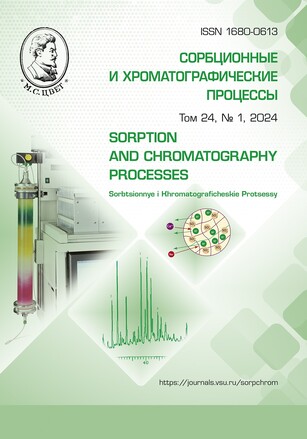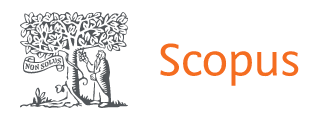Определение флавоноидов кожуры плодов Citrus reticulata
Аннотация
В работе исследован флавоноидный состав экстракта кожуры мандаринов 10 сортов различных производителей. Кожуру мандаринов снимали с плодов, приобретенных на рынке г. Белгорода, и высушивали при комнатной температуре вне доступа прямого солнечного света. Для экстракции были подобраны составы «зеленых», основанных на этаноле экстрагентов, и соотношения «навеска растительного материала : объем экстрагента», обеспечивающие высокий выход флавоноидов. Для разделения использовали обращенно-фазовую ВЭЖХ на стационарной фазе Kromasil 100-5C18 в экологически благоприятных составах подвижных фаз, содержащих в качестве органического модификатора этанол, а в качестве подкислителя все подвижные фазы содержали 0.2 об.% ортофосфорной кислоты, в режиме градиентного элюирования. Для отнесения компонентов экстракта использовали образцы ряда веществ и параметры электронных спектров поглощения в сравнении с литературными данными. Установлено, что хроматографический профиль экстрактов исследованных образцов заметно различался. Во всех экстрактах обнаружен ряд наименее липофильных соединений – производных коричных кислот. Затем следуют два гликозида флаванонов – основной из которых гесперидин (гесперитин-7-рутинозид), содержание которого составляет 26.0-39.9 мг на 1 г высушенного сырья, и в существенно меньших количествах содержится нарингин (нарингенин-7-неогесперидизид) – от 0 до 1.15 мг на 1 г. Но наибольший интерес представляют полиметоксилированные флавоны, среди которых основной компонент нобилетин (5,6,7,8,3′,4′-гексаметоксифлавон) с содержанием в сушеной кожуре от 0,03 до почти 11 мг/г, и в несколько меньших количествах обнаруживается тангеретин (5,6,7,8,4′-пентаметоксифлавон) – 0.1-5.4 мг/г. Установлено, что особенно высокий уровень накопления нобилетина и тангеретина наблюдается в кожуре мелких мандаринов. И в целом, кожура мандаринов является ценным источником высоко биологически активных флавоноидов, поэтому ее переработка – важная задача пищевой промышленности.
Скачивания
Литература
Cornélio M.T.M.N., Figueirôa A.R.S., Santos K.G.B., Carvalho R., Soares Filho W.S., Guerra M. Chromosomal relation-ships among cultivars of Citrus reticulata Blanco, its hybrids and related species. Plant Syst. Evol. 2003; 240: 149-161. https://doi.org/10.1007/s00606-003-0012-3
Anticona M., Lopez-Malo D., Frigola A., Esteve M.J., Blesa J. Comprehensive analysis of polyphenols from hybrid Man-darin peels by SPE and HPLC-UV. LWT. Food Sci. Technol. 2022; 165: 113770. https://doi.org/10.1016/j.lwt.2022.113770
Manthey J.A., Grohmann K. Phenols in Citrus Peel Byproducts. Concentrations of Hydroxycinnamates and Polymethox-ylated Flavones in Citrus Peel Molasses. J. Agric. Food Chem. 2001; 49: 3268-3273. https://doi.org/10.1021/jf010011r
Zhong W.-J., Luo Y.-J., Li J., Wu Y.-P., Gao Y.-J., Luo H.-J., Yang Y.-T., Jiang L. Polymethoxylated flavonoids from Cit-rus reticulata Blanco. Biochem. Systemat. Ecol. 2016; 68: 11-14. https://doi.org/10.1016/j.bse.2016.02.031
Lv X., Zhao S., Ning Z., Zeng H., Shu Y., Tao O., Xiao C., Lu C., Liu Y. Citrus fruits as a treasure trove of active natural metabolites that potentially provide bene-fits for human health. Chem. Central J. 2015; 9: 68. https://doi.org/10.1186/s13065-015-0145-9
Jokić S., Šafranko S., Jakovljević M., Cikoš A.-M., Kajić N., Kolarevć F., Babić J., Molnar M. Sustainable Green Procedure for Extraction of Hesperidin from Selected Croatian Mandarin Peels. Processes. 2019; 7: 469. https://doi.org/10.3390/pr7070469
Milejkovskaya E., Yoo S.-H., Douhan U., Chen Z.H. Nobiletin: napravlennoe vozdejstvie na cirkadnye ritmy dlya obespecheniya normal'noj bioenergetiki i zdorovogo stareniya. Biohimiya. 2020; 85: 1829-1836 https://doi.org/10.31857/S0320972520120076 (In Russ.)
Yamada S., Shirai M., Ono K., Teruya T., Yamano A., Woo J.T. Beneficial effects of a nobiletin-rich formulated supplement of Sikwasa (C. depressa) peel on cognitive function in elderly Japanese subjects; A multicenter, randomized, double-blind, placebo-controlled study. Food Sci. Nutr. 2021; 9: 6844-6853. https://doi.org/10.1002/fsn3.2640
Dzhancharova G.K., Muhametzyanov R.R., Platonovskij N.G., Arzamasceva N.V., Ivancova N.N., Vasil'eva E.N., Fe-dorchuk Mak-Eachen A.I. Rossiya i drugie strany mira v mezhdunarodnoj torgovle citrusovymi fruktami. Moskovskij ekonomicheskij zhurnal. 2021; 12: 39. URL: https://qje.su/ekonomicheskaya-teoriya/moskovskij-ekonomicheskij-zhurnal-12-2021-21. (In Russ.)
Emel'yanov A.A., Emel'yanov K.A., Kuznecova E.A. Biologicheski aktivnye produkty pererabotki plodov mandarina. Pishchevaya promyshlennost'. 2013; 11: 76-78 (In Russ.)
Krasenkov O.I., Nadykta V.D., Gor-lov S.M., Kvasenkov I.I., Donchenko L.V., Rodionova L.Ya. Sposob proizvodstva pek-tina iz citrusovyh vyzhimok / Patent RU 2238995 C2. (In Russ.)
Zabusova V.V., Demakova E.A., Parshikova V.N., Stepen' R.A. Efirnye masla iz othodov realizacii i potrebleniya plodov citrusovyh. Himiya rastitel'nogo syr'ya. 1999; 4: 105-111 (In Russ.)
Mouly P., Gaydou E.M., Auffray A. Simultaneous separation of flavanone gly-cosides and polymethoxylated flavones in citrus juices using liquid chromatography. J. Chromatogr. A. 1988; 800: 171–179. https://doi.org/10.1016/s0021-9673(97)01131-x
Liu E-H., Zhao P., Duan L., Zheng G.-D., Guo L., Yang H., Li P. Simultaneous determination of six bioactive flavonoids in Citri Reticulatae Pericarpium by rapid res-olution liquid chromatography coupled with triple quadrupole electrospray tandem mass spectrometry. Food Chem. 2013; 141: 3977–3983. https://doi.org/10.1016/j.foodchem.2013.06.077
Chen Q., Gu Y., Tan C., Sundarara-jan B., Li Z., Wang D., Zhou Z. Compara-tive effects of five polymethoxyflavones purified from Citrus tangerina on inflam-mation and cancer. Front. Nutr. 2022; 9: 963662. https://doi.org/10.3389/fnut.2022.963662
Malešev D., Kunti V. Investigation of metal–flavonoid chelates and the deter-mination of flavonoids via metal–flavonoid complexing reactions. J. Serb. Chem. Soc. 2007; 72: 921–939. https://doi.org/10.2298/JSC0710921M
Kumar S., Pandey A.K. Chemistry and Biological Activities of Flavonoids: An Overview. Scientific World J. 2013; 2013: 162750. https://doi.org/10.1155/2013/162750
Tsimogiannis D., Samiotaki M., Pa-nayotou G., Oreopoulou V. Characteriza-tion of Flavonoid Subgroups and Hydroxy Substitution by HPLC-MS/MS. Molecules. 2007; 12: 593-606. https://doi.org/10.3390/12030593
Deineka V.I., Lapshova M.S., Makarevich S.L., Provornaya T.V., Deine-ka L.A. Kompleksoobrazovanie digi-drokvercetina s β-ciklodekstrinom // Fenol'nye soedineniya: fundamental'nye i prikladnye aspekty [Tekst]: materialy dokladov VIII Mezhdunarodnogo simpozi-uma, Moskva, 2-5 oktyabrya 2012 g. / otv. Red. N.V. Zagoskina. M.: IFR RAN; RUDN, 2012; 51-55 (In Russ.)
Majumdar S., Srirangam R. Solubili-ty, Stability, Physicochemical Characteris-tics and In Vitro Ocular Tissue Permeabil-ity of Hesperidin: a Natural Bioflavonoid. Pharm Res. 2009; 26: 1217-1225. https://doi.org/10.1007/s11095-008-9729-6
Xu R., Cong Y., Zheng M., Chen G., Chen J., Zhao H. Solubility and Modeling of Hesperidin in Cosolvent Mixtures of Ethanol, Isopropanol, Propylene Glycol, and n-Propanol + Water. J. Chem. Eng. Da-ta. 2018; 63: 764-770. https://doi.org/10.1021/acs.jced.7b00948
Sun Y., Wang J., Gu S., Liu Z., Zhang Y., Zhang X. Simultaneous Deter-mination of Flavonoids in Different Parts of Citrus reticulata ‘Chachi’ Fruit by High Performance Liquid Chromatography—Photodiode Array Detection. Molecules. 2010; 15: 5378-5388. https://doi.org/10.3390/molecules15085378
Duan L., Guo L., Liu K., Liu E.-H., Li P. Characterization and classification of seven Citrus herbs by liquid chromatog-raphy–quadrupole time-of-flight mass spectrometry and genetic algorithm opti-mized support vector machines. J. Chroma-togr. A. 2014; 1339: 118-127. https://doi.org/10.1016/j.chroma.2014.02.091
Anticona M., Lopez-Malo D., Frigo-la A., Esteve M.J., Blesa J. Comprehensive analysis of polyphenols from hybrid Man-darin peels by SPE and HPLC-UV. LWT - Food Sci. Technol. 2022; 165: 113770. https://doi.org/10.1016/j.lwt.2022.113770
Šafranko S., Ćorković I., Jerković I., Jakovljević M., Aladić K., Šubarić D., Jok-ić S. Green Extraction Techniques for Ob-taining Bioactive Compounds from Manda-rin Peel (Citrus unshiu var. Kuno): Phyto-chemical Analysis and Process Optimiza-tion. Foods. 2021; 10: 1043. https://doi.org/10.3390/foods10051043
Safdar M.N., Kausar T., Jabbar S., Mumtaz A., Ahad K., Saddozai A.A. Ex-traction and quantification of polyphenols from kinnow (Citrus reticulate L.) peel us-ing ultrasound and maceration technique. J. Food Drug Anal. 2017; 25: 488-500. https://doi.org/10.1016/j.jfda.2016.07.010
Yang Y., Zhao X.J., Pan Y., Zhou Z. Identification of the chemical compositions of Ponkan peel by ultra performance liquid chro-matography coupled with quadrupole time-of-flight mass spectrometry. Anal. Methods. 2016; 8: 893-903. https://doi.org/10.1039/C5AY02633D








